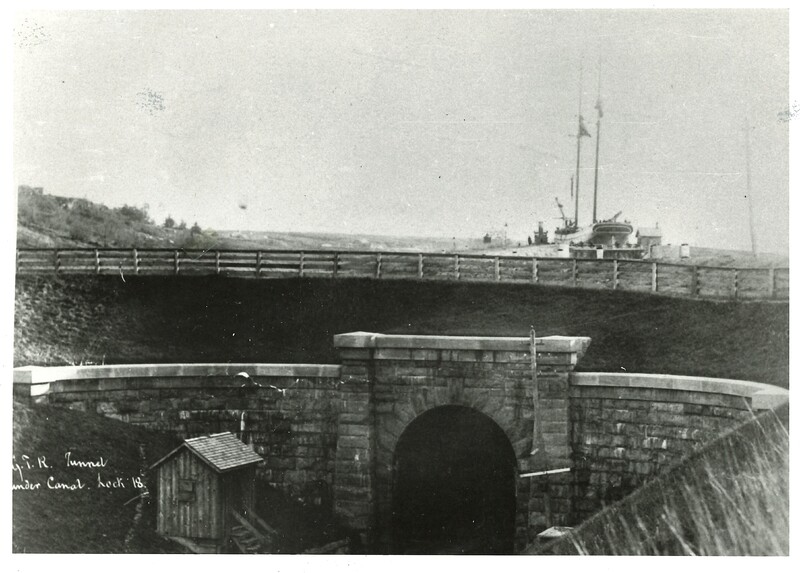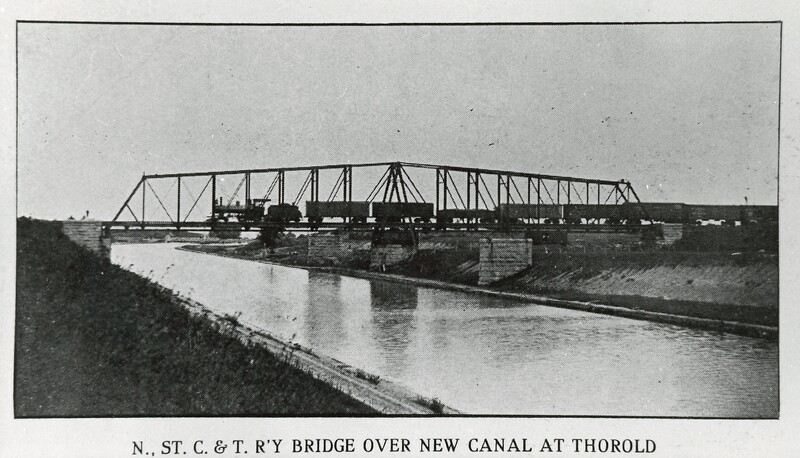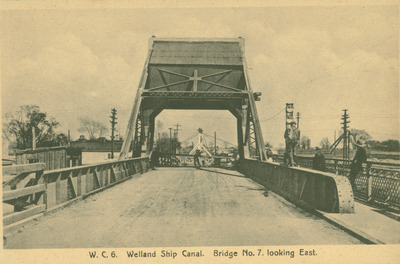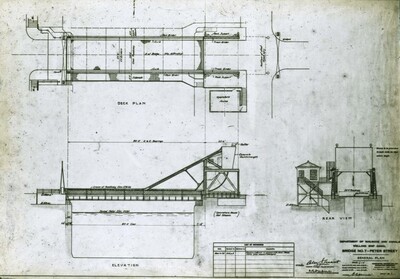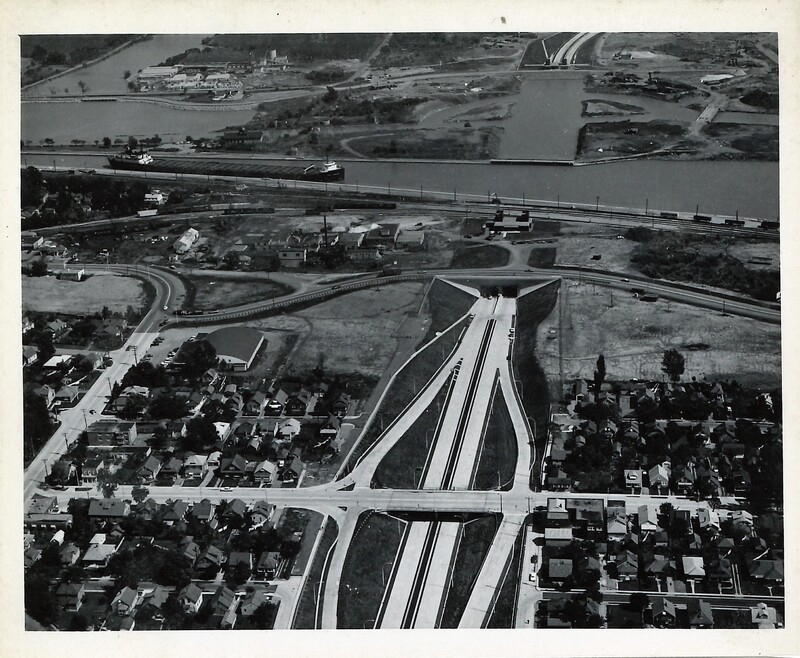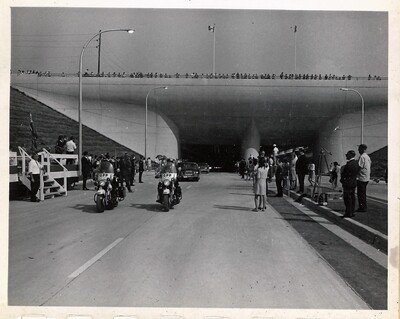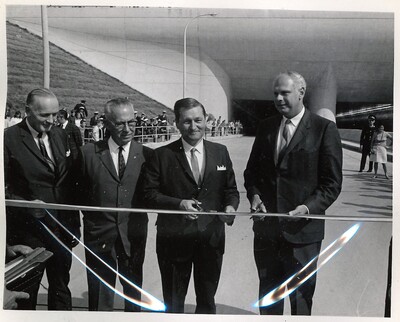Thorold
Canal crossings in Thorold (outside the communities of Port Robinson and Allanburg) sometimes differed from those in other areas. Tunnels, instead of bridges, have often been used in the area to allow railway, pedestrian, and vehicular traffic around the canal. A railway tunnel was built by the Great Western Railway (later the Grand Trunk Railway) in Thorold in 1880, under the third canal between locks 18 and 19. The first train passed through in March 1881. The tunnel was praised for its impressive masonry. As trains became larger it was apparent that the tunnel could no longer accommodate their increased size. It was replaced by a steel truss bridge around 1902, although the tunnel was used periodically until about 1915.
The abandoned tunnel remains and is commonly known as the Merritton Tunnel or Blue Ghost Tunnel, apparently named after a photograph taken at the tunnel entrance showed a blue-tinged mist resembling a person. Several accidents occurred around the tunnel, including multiple deaths during construction and a collision between two trains in 1903 that resulted in two fatalities. These incidents contribute to its haunted reputation. The tunnel is in an isolated area that can only be reached by foot.
A road tunnel was also built around the same time that connected Thorold with the village of St. David's. The tunnel took five years to build and was completed in 1878. It was between locks 16 and 17 of the third canal and was designed to carry horse-drawn vehicles and pedestrians. The tunnel began to leak around 1881, making travel through it uncomfortable. Residents were assured that the leaking was not serious, and was due to the fact that parts of the vault had been exposed to the elements for three years before the canal was filled with water. In 1885, Thorold residents petitioned for its repair. Sometime after 1922, the tunnel was sealed at both ends.
As seaway and automobile traffic steadily increased in the 20th century, tunnels and high level bridges were increasingly seen as a way to alleviate traffic congestion. By 1955, the federal Department of Transport made plans for tunnels and high-level bridges in the most congested areas around the canal. The plans were ambitious and not all the structures originally planned were built, but several projects were completed, including a tunnel in Thorold.
Construction of the Thorold tunnel began in 1965 and was completed in 1967. It was designed by H.G. Acres and Company Ltd. and built by Pitts-Atlas, a joint venture of C.A. Pitts, General Contractor Ltd., and Atlas Construction Company Ltd. The tunnel replaced two bascule bridges (Bridge 9 at Ontario Paper Co. and Bridge 7 at Peter Street) that carried traffic over the canal. The construction of the tunnel eliminated the traffic congestion that often occurred in the area during the shipping season. The majority of the construction occurred during the winter months when the canal was closed to shipping. The water was drained and concrete sections were poured to create the tunnel. During the summer months, the end sections of the tunnel were constructed so that shipping could continue uninterrupted. The project cost twenty-four million dollars and was financed jointly by the Department of Highways and the St. Lawrence Seaway Authority. The tunnel was officially opened on September 18, 1968.
